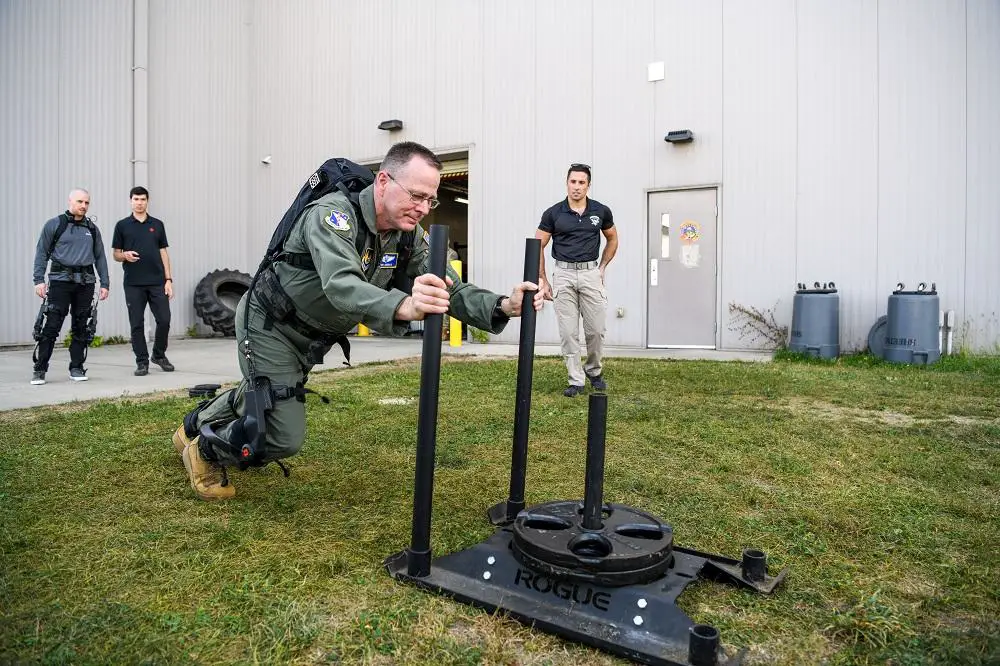The U.S. Air Force Research Laboratory’s Center for Rapid Innovation, or CRI, held an event October 6 with the U.S. Air Force Reserve Command’s 445th Airlift Wing for a ROAM Robotics team to demonstrate the latest Forge System, a pneumatically-powered exoskeleton that augments leg strength to reduce fatigue, increase endurance and offset weight. The event began with a presentation of the pneumatically-powered exoskeleton system, which is supported by Direct to Phase II Small Business Innovation Research project called Radical Improvements in Personnel Performance through Enhanced Development, or RIPPED. Two aerial porters from the 87th Aerial Port Squadron waited in the back of a C-17 Globemaster III to demonstrate the technology. This technology could be a game changer for the aerial port community.

“If this is optimized for the aerial porters’ particular missions, it is going to mean that teams will be able to load heavier objects on aircraft much faster using less people, which equates to saving the government and taxpayer money. But the biggest game changer for the Air and Space Forces is less injuries to personnel, which can lead to longer careers. If you’ve ever loaded anything in an office or maybe at home like a refrigerator — anything like that is small compared to what our aerial porters are loading. For them, we’re talking about large pieces of cargo going into a large aircraft. So knees are under stress; ankles are under stress; backs are under stress; muscles all over the body are under stress,” John Florio, CRI deputy director said.

Aerial porters are responsible for the management and movement of passengers and cargo transported through airlift. The cargo that aerial porter teams load and unload can range from large pallets of equipment, gear and food. Chief Master Sgt. Sean Storms, 87th APS aerial port manager, and Senior Master Sgt. Brian Anders, 87th APS assistant aerial port manager, donned the technology, which consisted of actuated leg braces and a backpack, and moved a pallet that weighed about 3,500 pounds. The two porters equipped with the Forge System moved the pallet on their own, a weight typically moved by four or five people. Following the demo, participants were invited to try out the exoskeleton. Some climbed a set of stairs while carrying weights. Others tested it by pushing a weighted sled. Regardless of the test, participants could hear the exoskeleton’s air bladder actuators engaging as they moved.

The aerial porters are required to move during missions, sometimes in austere environments or under fire is unlike what some may experience when moving to a new home or office. The ROAM Robotics Forge System could be adapted to fit other missions, but for now, attention was on providing relief to the aerial porter community, an estimated $31 million in annual disability benefits and suffers from lost workday injuries. Roam Robotics is dedicated to helping millions of people push past their current physical boundaries and extend their ability to do the activities they love. Roam was founded by Dr. Tim Swift in 2013, with the dream of developing lightweight, low-cost, wearable robotic devices that can be easily integrated into everyday life. Roam’s proprietary technology generates unmatched power-to-weight ratio, utilizes scalable manufacturing techniques, and harnesses innovative AI-informed robotics to restore and expand the boundaries of human mobility.
















